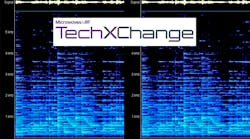BAE Aids Korean Aircraft Communications
NATO and the Republic of Korea (ROK) will be receiving aircraft communications support using secure, anti-jam, software-defined-radio (SDR) technology from BAE Systems. Fueled by multiple contracts totaling $111 million, BAE will develop and manufacture SDRs compliant with second-generation, anti-jam, tactical, ultra-high-frequency radio for NATO (SATURN) waveforms and communications signals.
As part of ROK’s national communications modernization strategy, airborne SDRs will employ SATURN’s fast-frequency-hopping signals for secure and interoperable command and control communications for both rotary- and fixed-wing aircraft (see image above).
Dave Logan, vice-president and general manager of C4ISRS at BAE Systems, explained, “In today’s complex and contested battlefields, superiority on the ground, in the air, and at sea is mission-critical.”
He added, “This tailored solution for the Republic of Korea will equip its forces with state-of-the-art, secure, and modern communications for a variety of tactical missions while allowing them to maintain interoperability with the U.S. and coalition partners.”
BAE has more than 100,000 radios deployed globally, and its ARC-232A SDR is a SATURN-capable design that's small, light in weight, and readily upgradable to counter changing threats and interference. The multiple-band SDRs, which will be produced at BAE’s Fort Wayne, Ind., facility, offer secure anti-jam voice, data imagery transmission, and network-capable communications. They will be supplied to Korean manufacturer LIG Nex1 for final build, testing, and aircraft integration.
About the Author
Jack Browne
Technical Contributor
Jack Browne, Technical Contributor, has worked in technical publishing for over 30 years. He managed the content and production of three technical journals while at the American Institute of Physics, including Medical Physics and the Journal of Vacuum Science & Technology. He has been a Publisher and Editor for Penton Media, started the firm’s Wireless Symposium & Exhibition trade show in 1993, and currently serves as Technical Contributor for that company's Microwaves & RF magazine. Browne, who holds a BS in Mathematics from City College of New York and BA degrees in English and Philosophy from Fordham University, is a member of the IEEE.


